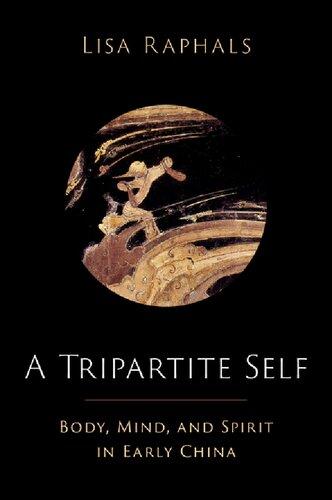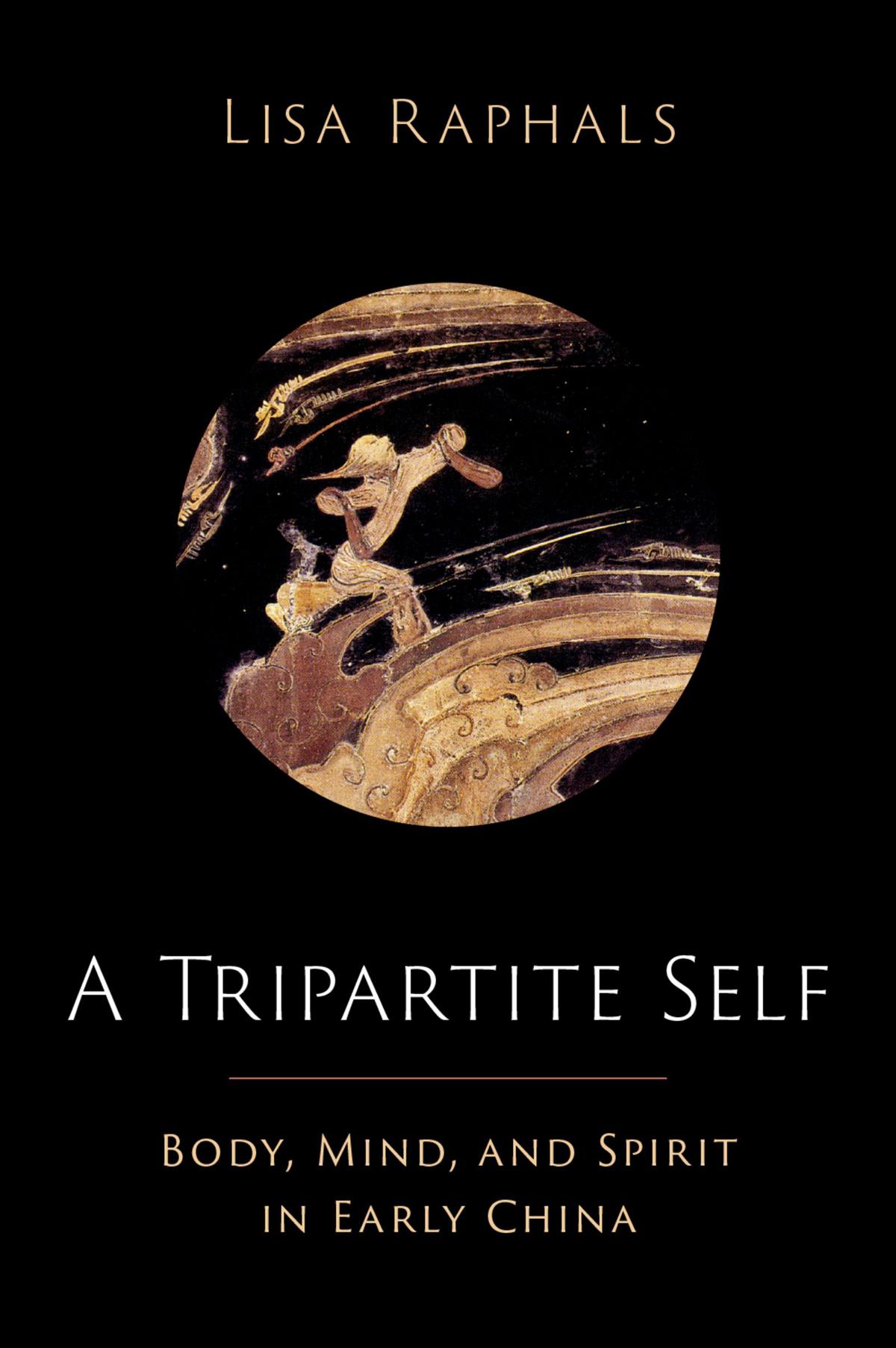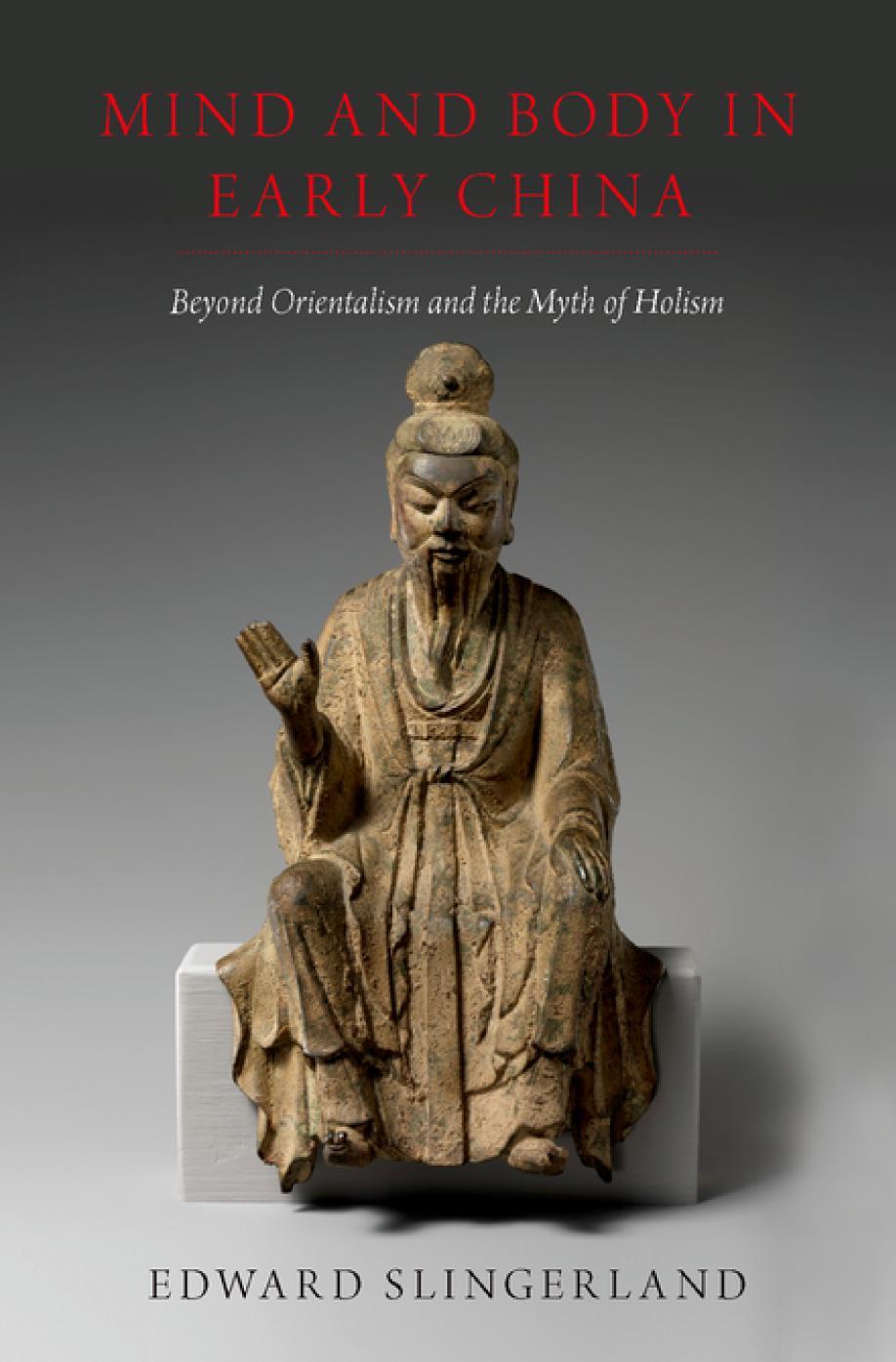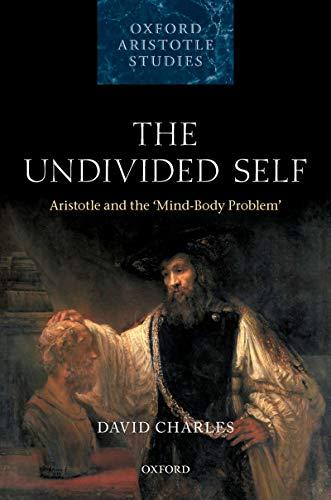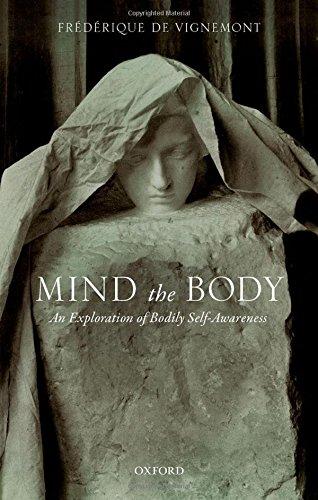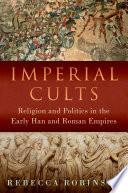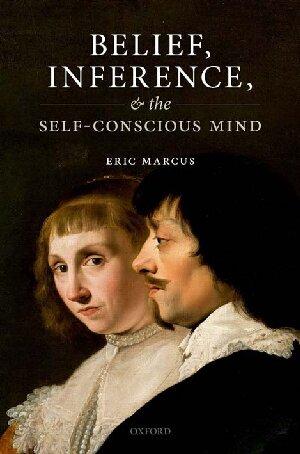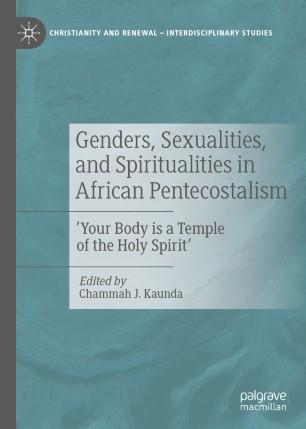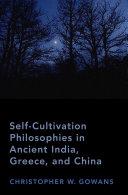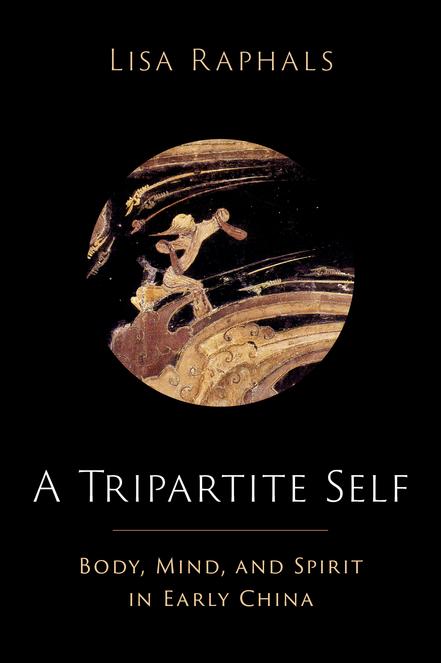Notes on Conventions, Editions, and Transcriptions
The Pinyin transliteration system is used throughout, including in quoted text, except for the names of authors who use non-Pinyin spellings for their own names and for terms that are well known in a Latinate version (e.g., Confucius).
Chinese characters are included in the text for translated passages and where immediate reference is especially convenient. All Chinese characters are given in traditional form.
Chinese translations are my own unless otherwise indicated. Existing translations of Chinese texts are included for reference and are cited by name (i.e., Biot 1.409) rather than by name and date.
Certain key terms only lose by translation, or worse, the shortcut of translation introduces confusion by force of habit. Therefore, I have chosen to leave certain key terms as they are. These include the Chinese terms dao (familiar to some as tao), qi, and yin and yang. In other cases, I have retained Chinese titles, for example for the Zuozhuan (Zuo Transmissions).
Throughout this book, I use the following English translations for key terms for body, mind, and spirit:
Body: Form: for xing 形
Frame, occasionally limbs: for ti 體
Person or embodied person: for shēn 身
Mind: heart–mind, occasionally mind or heart, for xin 心
Spirit: spirit for shén 神, in the meaning of both external spirits and internal spirit
Where possible, references are to the Chinese University of Hong Kong Institute for Chinese Studies (ICS) Concordance Series.
Chinese Standard Histories are from the Zhonghua shuju series (Beijing, 1959–) and are cited by chapter and page number (e.g., Hanshu 30, 1772).
For the Zuozhuan, the modern edition of Yang Bojun (1991) is used because of its easy availability, convenience, and widespread use by other scholars.
xii Notes on Conventions, Editions, and Transcriptions
In this and other editions that use modern pagination, references give page number, followed by section or subsection (e.g., Zuo, 849, Cheng, 10.4).
Premodern texts, excavated texts, and archaeological monographs without individual authors are cited by title. Short archaeological reports without individual authors are cited by journal (e.g., from Wen wu: WW 1979.19: 14–24).
The following abbreviations are used for major Chinese primary and secondary texts and journals. Full entries are found in the Bibliography.
AM Asia Major
BEFEO Bulletin de l’École Française d’Extrême-Orient (Paris)
BIHP Bulletin of History and Philology (Taiwan)
BMFEA Bulletin of the Museum of Far Eastern Antiquities (Stockholm)
BSOAS Bulletin of the School of Oriental and African Studies (London)
CCT Contemporary Chinese Thought
Dao Dao: An International Journal of Chinese Philosophy
DWY Daojia wenhua yanjiu (Shanghai)
EASTM East Asian Science, Technology and Medicine
EC Early China
EO Extrême-Orient, Extrême-Occident Cahiers de recherches comparatives (Paris)
FPC Frontiers of Philosophy in China
Guodian Guodian Chumu zhujian
HHS Hou Hanshu
HJAS Harvard Journal of Asiatic Studies
HNZ Huainanzi
HS Hanshu
ICS Institute for Chinese Studies Concordance Series (Hong Kong)
JA Journale Asiatique
JAAR Journal of the American Academy of Religion
JAOS Journal of the American Oriental Society
JCC Journal of Cognition and Culture
JCP Journal of Chinese Philosophy
JCR Journal of Chinese Religions
JDS Journal of Daoist Studies
JRAS Journal of the Royal Asiatic Society
L Littré, E. (1839–1861) Oeuvres completes d ‘Hippocrate, 10 vols., Paris
LH Lunheng
LJ Liji
LS Huangdi neijing lingshu (in Shibue Chūsai 澀江抽齋, 2003)
LSCQ Lüshi chunqiu
Notes on Conventions, Editions, and Transcriptions
MS Monumenta Serica
MWD Mawangdui Hanmu boshu
PEW Philosophy East & West
SBBY Sibu beiyao
SEP Stanford Encyclopedia of Philosophy
SJ Shiji
SKQS Siku quanshu
SSJZS Shisanjing zhushu
SW Huangdi neijing suwen (Yamada Gyōkō 山田業廣, 2004)
TP T’oung-pao
U Unschuld 2016
UT Unschuld and Tessenow 2011
WW Wenwu
Introduction
Chinese philosophy has long recognized the importance of the body and emotions in extensive and diverse self-cultivation traditions. Philosophical debates about the relationship between mind and body are often described in terms of mind–body dualism and its opposite, monism or some kind of “holism.”1 Monist or holist views agree on the unity of mind and body, but with much debate about what kind, whereas mind–body dualists take body and mind to be metaphysically distinct entities.2 The question is important for several reasons. Several humanistic and scientific disciplines recognize embodiment as an important dimension of the human condition. One version, the problem of mind–body dualism, is central to the history of both philosophy and religion. Some account of relations between body and mind, spirit, or soul is also central to any understanding of the self. Recent work in cognitive and neuroscience underscores the importance of our somatic experience for how we think and feel.3
Debates about mind–body dualism have become important in Chinese and comparative philosophy because of claims that Chinese thought is “holist”—including claims that there was no mind–body dualism in early China—and contrasts between supposed Chinese holism and “Western”
1 Holist views include those of materialists, for whom mental states are simply physical states, and idealists, for whom physical states are really mental states. For dualists, mind and body are both real and different: neither can be assimilated into the other. For example, substance dualists, such as Descartes, believed that matter and mind were two distinct kinds of substance. The present discussion focuses on mind–body dualism only.
2 There are multiple varieties of dualism, as well as multiple mind–body problems. For example, the term dualism refers to claims that, for a given domain, there are two fundamental kinds or categories of things or principles (for example, Good and Evil in theology), in contrast to monism: the theory that there is only one fundamental principle, kind, or category of thing. (It also contrasts with pluralism: the view that there are many kinds or principles or categories. In philosophy of mind, dualism refers to the theory that the mental and physical, or mind and body (including the brain), are composed of metaphysically different entities. The mind–body problem refers to problems of the relationship between mind and body or between the mental and the physical. It includes the ontological problem of distinguishing mental states from physical states and the nature of their relationship; causal questions of their mutual influence (if any); and related issues involving the nature of consciousness, intentionality, the self, and so on. See Robinson 2017.
3 For example, Damasio 1994, 2010; Gallagher 2005; and Johnson 1993.
A Tripartite Self. Lisa Raphals, Oxford University Press. © Oxford University Press 2023. DOI: 10.1093/oso/9780197630877.003.0001
dualism. Holist views make virtually no distinction between body and mind and spirit, and they tend to reduce all three to material or quasi-material substances, often identified with qi 氣 4 Dualist views set up a distinction between a material body and a nonmaterial mind, soul, or spirit. Overall, dualist views have historically been Eurocentric, but recent claims for concepts of mind–body dualism in early China argue against the holist position in a Chinese context. Claims for Chinese concepts of mind–body dualism are part of a broader critique of a “neo-Orientalist” tendency to portray Chinese and Western thought as radically different.5 This debate has renewed interest in the role of mind–body interactions in early Chinese thought. Much of the discourse of mind–body dualism uses a problematic binary, without acknowledgment of the very separate roles of “mind” and “spirit.” Although this issue has received some attention in experimental psychology, it is often ignored in philosophical studies.6 It also matters in a broader context, both for debates about cultural particularism and human universals, and for understanding of personal autonomy and agency.
I begin by outlining five overlapping intellectual and disciplinary perspectives that address—or somehow fail to address—problems of mind and body. In the next two sections, I focus on problems with mind–body dualism and propose an alternative view of a tripartite self. I conclude with the plan of this book and how it attempts to address these questions.
Intersecting Perspectives
A significant problem is that the entire topic is distributed among (or between) a host of problématiques and even disciplines, which often talk past each other. These include (1) studies of concepts of the body (Chinese shēnti guan 身體觀) or embodiment; (2) studies of the emotions, including their relations to cognition and to embodiment, across a range of disciplines; (3) studies of the mind in the context of self-cultivation, often within the discipline of ethics or philosophy, (4) studies of broader issues of selfhood,
4 The term qi—matter energy stuff—is transliterated rather than translated throughout. Please refer to the Glossary for this and other transliterated terms.
5 In particular, a series of studies by Edward Slingerland (2013, 2016, 2019) argue against claims that early China had no concept of mind–body dualism. This view is part of a broader critique of what Slingerland calls a “neo-Orientalist” tendency to portray Chinese thought as radically different from Western thought.
6 For example, Richert and Harris 2008.
personhood, and, in some cases, autonomy, often within the discipline of philosophy; and (5) studies of mind–body dualism. Some of these include discussion of conceptual or root metaphors.
In addition, most studies of mind–body dualism in early China are either not comparative or anachronistically compare early Chinese texts with modern European philosophers such as Kant, Leibniz, and Spinoza. These examples illustrate the wide range of texts and methods scholars have used to explore problems of body and mind in early China and some of the very different conclusions reached.
Embodiment
In recent years, a range of studies have explored early Chinese understanding of the body. These studies vary in their themes, textual sources, and methods, but a few themes and approaches are especially prominent. One group of studies focuses on specifically Confucian texts (including some that purport to present an “early Chinese view” of the body). Roger Ames focuses on specifically Confucian understandings of the body in an important early study of Chinese views of the body. Other studies follow a particular term across one or several texts.7
An important study by Mark Edward Lewis on the construction of space in early China identifies an important debate about how the body arose as a means of constructing and organizing space in fourth-century (bce) China and points to very different accounts of the body in writings associated with Yang Zhu, parts of the Guanzi, Mencius, and the authors of the Zuozhuan. Lewis’s study also explores some of the consequences of depicting the body as a temporary compound of diverse elements and examines how the body was an element in a larger whole, in analogies between the body and the cosmos and between the body and the state.8 Extensive scholarship has explored analogies between the body and the state or body politic, and analogies between the microcosm of the body and the macrocosm of the cosmos.9
7 Y. Lo 2003, 2008; Sommer 2008, 2010, 2012. These will be discussed in more detail in Chapter 1.
8 Lewis 2006, ch. 1: 13–76.
9 For analogies between the body and the state, see Sivin 1995. For additional discussions of macrocosm–microcosm analogies, see Sivin 1995.
A group of Sinophone scholars have explored the study of concepts of the body from a range of disciplinary and textual perspectives.10 Yang Rubin’s study of Confucian views of the body focuses on Mencius and explores the body foundation of Confucian theories of mind and metaphysics. Yang understands the body as a complex structure of form (xing 形), qi, and spirit (shén 神), closely linked with the heart–mind (xin 心).11 He emphasizes the importance Confucians attach to social aspects of the body, and he argues that in Confucian views, mind and body are one, Heaven and humanity are one, and inside and outside are continuous.12 From a very different point of view, Hidemi Ishida focuses on the understanding of the body in medical texts.13
Roles of the Emotions
Recent studies of the emotions in Chinese philosophy also engage the boundary between body and mind and soul and spirit. Some of this investigation has centered on debates about the word qing 情 and on whether, how, and at what specific historical point it came to refer to emotions, but this issue is not relevant to the present inquiry. 14 Of greater relevance are investigations of the nature of the relations between the emotions, the body, and the heart– mind. These investigations fall into two very different groups.
One is the claim that emotion motivates virtuous action and, more specifically, that the correct emotions are a prerequisite for virtuous action.15 A weak version of this view is the claim that intuitions, moral judgments, and emotions naturally work in tandem.16 A stronger version of this view is the claim—expressed in the Analects, Mencius, Xunzi, and elsewhere—that emotions are central to virtuous action. But why? And how do the emotions
10 See Cai Biming 1997, He Jianjun 2007, Wu Kuang-ming 1997, Yang Rubin 1993, 1996, and Zhang Zailin 2008, among others.
11 In transliteration, I use tonal marks to distinguish shén 神 (“spirit”) from shēn 身 (“[embodied] person”).
12 See Ames 1993, 1994, Yang Rubin 1993.
13 Especially the Huangdi neijing (Yellow Emperor’s Classic of Internal Medicine). See Ishida 1989, 1993.
14 See Graham 1967, Hansen 1985, and Puett 2004, among others.
15 For emotions and the heart–mind, see Perkins 2002. For emotions and virtuous action, see Perkins 2002, Virág 2017.
16 See Nylan 2001: 89.
promote virtue? Do they work by influencing the body or the mind, or is there even a clear distinction?
Texts that link emotion with virtuous action give very different explanations. Warring States texts differ considerably in their accounts of the relations between emotions, primary energy, virtuous conduct, and correct ritual. A few examples suggest the range and complexity of these disagreements.
An oft-cited passage in the Lunyu suggests a central role of the mind, when Confucius states that at seventy he could “follow the desires of his heart–mind” (cong xin suo yu 從心所欲) without overstepping propriety.17 He considered profound and spontaneous emotions to be one of the defining attributes of a perfected person, hence his repeated insistence on emotional transparency and authenticity.18 Curie Virág argues that Confucius’s emphasis on the vital role of emotions in moral life reflects a new awareness that, properly understood and integrated, the emotions could be an important source for unity and could contribute to the stable identity and continuity of the self.
A possible explanation for this view of the emotions comes from a passage in the Zuozhuan on ritual, which describes the ability of (correct) emotions to structure natural and primary bodily energies:
則天之明 , 因地之性 , 生其六氣 , 用其五行 , 氣為五味 , 發為五
色,章為五聲...民有好惡喜怒哀樂,生于六氣,是故審則宜類,以
制六志 , 哀有哭泣 , 樂 有歌舞 , 喜有施舍 , 怒有戰鬥 , 喜生於好 ,
怒生於惡
They pattern themselves on the brightness of Heaven, follow the inherent nature of earth, produce the six qi and make use of the Five Phases.19 The qi form the five flavors, emerge as the five colors, and find patterns as the five sounds. . . . The people have likes and dislikes, pleasure and anger, sorrow and joy. These are born from the six qi. Thus one examines patterns and accords with categories in order to control the “six intents.” For sorrow there is formalized weeping, for joy there is music and dance, for pleasure there is bestowing gifts and rewards, for anger there is warfare and fighting. Pleasure is born from likes and anger from dislikes.20
17 Lunyu 2.4/3/1–2.4/3/2. Citations from the Lunyu are from the ICS series Concordance and are listed by section, page, and line number. Henceforward, citations are given in the text.
18 Virág 2017: 27–31.
19 Yin, yang, wind, rain, dark and light. See Zuozhuan, Zhao 1: 1222.
20 Zuozhuan, Zhao 25: 1458–59, translation indebted to Lewis 2006: 30.
This passage describes primary and natural energies that manifest in the body as emotions and explains how they can be guided and channeled by appropriate ritual, for example, ritual mourning for sorrow and ritual music and dance for joy. The Zuozhuan repeatedly asserts the primacy of ritual in constituting human life by guiding emotions and bodily energies. Mencius goes one step further and argues that, to be virtuous, virtuous action must be accompanied by the right feelings.21 For Mencius wisdom—as a “sprout” of virtue—is directly linked to the ability to feel sympathy for actual or potential suffering.22
For these and other Chinese thinkers who linked the emotions to virtuous action, ritual (li 禮) was an important component. But were correct emotions and correct ritual action the cause of virtue or the result? Confucius seems to have understood ritual as an enactment of virtue, especially the key virtue of benevolence or humaneness (ren 仁).23
Another account of the relation between emotion and ritual occurs in a text excavated from a late fourth-century tomb at Guodian 郭店 titled ““Human Nature Comes from the Mandate” (Xingzi mingchu 性自命 出). Here, humans exist in a world of “things” (wu 物, including humans) and things have natures. These things, with their natures, naturally interact. But our (human) natures include particular modes of energy: emotional dispositions. As a result, these natural interactions cause us to react emotionally:
喜怒哀悲之氣,性也。及其見於外,則物取之也。
The qi of joy, anger, sorrow, and sadness are inherent nature. When they are manifested externally, things get a hold on them.24
21 See Mencius 5A1 (on feelings toward family), 7B33 (on funeral rites). For discussion, see Perkins 2002: 209–10.
22 See Mencius 2A6 and 6A6, especially. For other treatments of emotions in Mencius, see Im 1999, 2002, Nivison 1979,1996, and Wong 1991, 2002.
23 See Pines 2002, ch. 6; Shun 2002: 67; and Virág 2017: 33–34. As Virág (2017: 42) points out, although Analects 9.1 claims that Confucius seldom spoke about ren, the term is used over a hundred times in the Analects, often in the context of explanations to his disciples.
24 Guodian Chumu, Xingzi mingchu, strips 2–3. The Guodian Chu bamboo strip texts (Guodian jianbo 郭店楚簡) were unearthed in 1993 in Tomb no. 1, Guodian, Jingmen, Hubei, and probably date to the late fourth century. Quotations of the Guodian texts are from Guodian Chumu zhujian (henceforward Guodian Chumu) and Liu Zhao 2003. Texts are cited by strip numbers for the text in which they appear. For example, a passage in slip 45 of the Guodian text Yucong 1 is cited as Guodian Chumu, Yucong 1, strip 45. For simplicity of transcription, I have incorporated the Guodian editors’ emendations. For example, the phrase 凡又(有)血氣者 is simply transcribed as 凡有血氣者 Translations of the Guodian manuscripts are my own but are indebted to Cook’s (2012) readings of the text and survey of key scholarship. For an introduction to the Guodian texts, see S. Chan 2019. The Guodian texts are discussed in detail in Chapter 5 of this text.
The text acknowledges that these energies/emotions are inherent in human nature, so it is impracticable to try to get rid of them. Instead, as Michael Puett usefully describes it, we should isolate instances of “good” interactions and responses and:
take that moment and make it into a ritual—which means having people re-do it, developing that same dispositional sense that occurred at that moment when (surprisingly) people acted well toward each other, thus inculcating in themselves the proper energies associated with that good response. Over time, a tradition of ritual repertoires accumulates from which humans slowly learn different ways of guiding their emotions, and thus slowly learn to have better dispositional responses toward those around them. These repertoires of ritual also train the next generation to have better dispositional responses toward those around them.25
Or as the Guodian text says: ritual arises from the dispositions.26 Similarly, we can use ritual to change dangerous and malevolent ghosts into beneficent ancestors. For example, in the “Meaning of Sacrifices” chapter of the Book of Rites, when Zai Wo 宰我 asks Confucius about the names “ghost” and “spirit,” he responds:
氣也者,神之盛也;魄也者,鬼之盛也;合鬼與神,教之至也。 眾
生必死 ,死必歸土 :此之謂鬼 。骨肉斃於下 ,陰為野土 ;其氣發揚 于上,為昭明,
The qi is the flourishing of spirit; the po is the flourishing of the ghost. Combining the ghost and the spirit is the highest teaching. All the living must die, and when they die, they must return to the earth; this is what is called ghosts. The bones and flesh die below; concealed, they become the earth of the wild fields. But the qi issues forth and rises up in glorious brilliance.27
As a result, “spirits”—the qi that float to Heaven after death—are worshiped as ancestors, which includes ranking ancestors into lineages and offering cult
25 Puett 2010: 102–3.
26 體其義而節文之,理其情而出入之 Guodian Chumu, Xingzi mingchu, strips 17–18.
27 Liji 25.24/126/5–10 (Ji yi 祭義).
according to lineage rank in an ancestral hall. One ritual responded to qi energies; another responded to po. 28
A very different view is the claim that emotions interfere with selfcultivation. The Neiye 內業 (Inner Workings) chapter of the Guanzi introduces the view that the emotions—closely associated with the body and senses—threaten the mind’s energies. Other scholars address the very different roles ascribed to the emotions in self-cultivation in the Zhuangzi.29 In one version of the claim, they create imbalance. In a stronger version of this claim—found in medical texts especially—emotions imbalance the body to the point of causing disease.30
Mind, Body, and Self-cultivation
A third group of approaches discusses something analogous to what Foucault has called “the care of the self,” better understood in a Chinese context as “self-cultivation” (xiushēn 修身) or “nurturing life” (yangsheng 養生). Traditions of self-cultivation fundamentally involve the care and preservation of body, mind, and spirit, but often disagree about relations between them. Some of these inquiries link the study of embodiment to the study of Chinese self-cultivation traditions. Several recent studies have emphasized the importance of embodied self-cultivation traditions, from very different points of view.
Michael Puett (2002) argues that the fourth century bce was a turning point in Chinese understanding of the relation between humans and gods. Instead of trying to propitiate divine powers, fourth-century critics of court sacrificial practices argued that it was possible for humans to use self-cultivation practices to become a spirit and to appropriate these powers, though these thinkers disagreed on how to do so. In light of these developments, Puett emphasizes that shén—spirit(s)—includes both extrahuman spirits with powers over natural phenomena and also refined forms of qi within humans. Equally important is why Warring States thinkers began to claim that they could become spirits.31
28 See Liji 25.29/17–18 (Ji yi). For discussion, see Puett 2010: 105.
29 See Fraser 2011, Morgan 2018.
30 These issues will be discussed in detail in Chapters 4 and 6.
31 Puett 2002: 21–23 and chs. 2–5 (80–224).
Puett argues that Bronze Age sacrificial ritual was fundamentally agonistic because of the capricious nature of spirits; it was used to transform ancestors into gods and create a divine hierarchy that humans could understand and manipulate.32 Warring States thinkers sought to reshape dominant attitudes and to reduce the distance between humans and gods through self-cultivation practices that allowed a person to become a spirit “Selfdivinization” increased individual human control and made it possible to bypass divination and sacrifice. This approach offers a very different view of Confucius’s famous advice to keep a respectful distance from gods and spirits and to concentrate on human concerns.33 It also offers new understandings of the very different self-cultivation practices described in texts as different as the Neiye and “Arts of the Mind” chapters of the Guanzi, the Mencius, the Zhuangzi, and the Chuci, among others 34 These texts differ in the selfcultivation methods they recommend, but all actively engage the body, mind, and spirit through the concentration of vital essence (jing 精) and qi.
It is worth emphasizing that, from an anthropological point of view, the scenario Puett describes is widespread. In a recent posthumous collection, the anthropologist Marshall Sahlins notes that, in contrast to Western modernity, the majority of cultures throughout human history have recognized a variety of gods, ancestors, plant and animal souls, and other entities often called “spirits” not as “supernatural” beings of some mysterious kind, but as real persons—or metapersons—as immanent in human existence. These “spirits” have “the essential attributes of persons, a core of the same mental, temperamental, and volitional capacities.”35 Sahlins’s point is to point to a new practice of anthropology that is consistent with this historical reality. The point for purposes of the present discussion is that interactions between humans and spirits, including the internalization of spirit and attempts to use self-cultivation to obtain spirit powers, are part of that history.
A study of wuwei 無為, or “acting without acting” by Edward Slingerland, argues for the centrality of wuwei as a spiritual ideal for thinkers as diverse as Confucius, Mencius, the authors of the Daodejing, Zhuangzi, and Xunzi.
32 Puett 2002, ch. 1: 31–79; cf. Keightley 1978, 1998, Poo Mu-chou 1998.
33 Lunyu 6.22; cf. Puett 2002: 97–101.
34 See Puett 2002: 109–17 (Neiye), 122–133 (Zhuangzi), 134–40 (Mencius), 170–72 (the Arts of the Mind” chapters of the Guanzi), and 202–24 (the Chuci). Puett also offers a new approach to the “spirit journeys” described in late Warring States and Han sources; and argues that these claims went handin-hand with claims for correlative cosmology: that the cosmos was a spontaneous system,
35 Sahlins 2022: 2. In such an “enchanted universe,” the distinction between natural and supernatural becomes meaningless (2022: 36).
Slingerland describes wuwei as “a state of personal harmony in which actions freely and instantly from one’s spontaneous inclinations,” yet both manifest supreme efficacy and harmonize with the demands of conventional morality. He describes it as both a mental state, characterized by effortless unselfconsciousness, and a mode of action that accords with the normative order of the cosmos.36 He argues that wuwei was central to a worldview characterized by the belief that the cosmos has a normative order in which humans have fallen away from their proper roles and modes of behavior. According to this shared view, a person who has regained this original state through wuwei acquires power or charismatic virtue (de 德). But, paradoxically, this ideal of “effortless action” can only be regained through a process of self-cultivation characterized by the need to “try not to try.”
For some Warring States thinkers—Mencius, the authors of the Daodejing, and Zhuangzi, especially—wuwei is already inherent in our nature that conforms to natural patterns, and it can be accessed by allowing it to manifest. For others, especially Xunzi, we can attain this state only by extensive training and effort. Either viewpoint admits a tension between effortless action and the effort needed to achieve it. For both, the methods for attaining wuwei, as with Puett’s “self-divinization,” are corporeal, mental, and spiritual.
Mark Csikszentmihalyi describes a fourth-century “material virtue” tradition, exemplified in the Mencius and two versions of the Wuxing 五行 (“Five Kinds of Action”) recovered from Guodian and Mawangdui 馬王堆 (Changsha, Hunan, c. 168 bce). Csikszentmihalyi argues that these texts provide “a detailed moral psychology describing the process of the cultivation of the virtues.”37 They address the question of what a virtue is and describe virtues in terms similar to bodily humors. The book argues that material virtue is an important part of the description of a “sage” and examines a series of fourth- through second-century (bce) texts as elements in a continuum that includes medicine, religion, and philosophy.
Csikszentmihalyi argues that a “material virtue” tradition developed as a Ru response to criticisms (initially in the Mozi and Zhuangzi) of their claims that “archaic” rituals were effective for either self-cultivation or the creation of social order. He considers the core texts of this tradition to be the Mencius and the Wuxing.
36 Slingerland 2003b: 5, 7, 29–33.
37 Csikszentmihalyi 2005: 7.
These texts include accounts of jing and qi, and Csikszentmihalyi applies these accounts to early Confucian ethics. He argues that for Mencius and a group of thinkers associated with Zi Si and found in excavated texts, virtue manifested physically in the body and was inseparable from it. Central to this view is an account of a material virtue grounded in the transformation of qi. According to both Mencius and the Wuxing, cultivation of the virtues transforms the body and appearance and is visible in a jadelike countenance and the appearance of the eyes. This view of qi is significantly grounded in late Warring States physiognomy and medicine. Other excavated texts on physiognomy show its importance in practical contexts, for example, a text from Yinqueshan on the physiognomizing of dogs, a Han sword physiognomy text from Juyan, and a text on the physiognomy of horses from Mawangdui. All share the view that internal qi is reflected in appearance and makes it possible to judge character or potential. In economic and military contexts, this meant judging the “character” of an animal or weapon. For Mencius, this theory of qi linked together the development of virtue and the transformed appearance of a sage. Xunzi, by contrast, rejected physiognomy as based on endowments received at birth, and thus it was not an indicator of self-cultivation.
All these ethically oriented or “normative” self-cultivation traditions involve body, mind, and spirit, often not clearly distinguished or explicitly blended. First, it could be argued that they provided the most concentrated expression of “individualism” in early China, insofar as only an individual can perform self-cultivation (xiushēn) or “nurture life” (yangsheng). Only an individual can “xiu” his or her “shēn” or “yang” his or her “sheng.” In addition, as Mark Csikszentmihalyi especially has demonstrated, they are not the property of any “school” (jia 家). Finally, they all involve knowledge that is embodied in the immediate sense that it is gained through physical practices. These approaches place the study of the body squarely within the purview of ethics.
Selfhood, Personhood, and Autonomy
A fourth approach in several Sinological and comparative studies is to examine the role of body and mind in emerging notions of selfhood or personhood. In many cases, studies of concepts of selfhood in early Chinese texts adopt Western/modern categories of body and mind that inform, and cast,
their analyses. One group is informed by a perceived antinomy between contemporary “autonomous” individuals and usually “premodern” collective notions of selfhood. Studies of “relational selfhood” focus on problems in relationships between individuals and groups, the latter including the family, family lineage (including dead ancestors), the country or state, and the world as a whole. In particular, several influential studies of “relational selves” posit a radical dichotomy between Western Kantian autonomous individuals and Chinese “relational selves.”
In an early study of Yang Zhu 楊朱, John Emerson argued that Yang Zhu was responsible for “the discovery of the body” as an important philosophical innovation. In contrast to Warring States senses of self that arose out of a new political order, Yang’s “physical definition of human nature” provided a new kind of freedom from notions of self previously defined by the roles imposed by state ritual (including clan identifications and ancestral obligations). By relegating these practices and relations to the realm of the “external,” Yang made possible a new kind of private and nonritual mode of individual selfawareness and self-cultivation that diverges significantly from the patterns imposed by Confucian and traditional practices and relationships. As Emerson put it:
The “discovery of the body,” wherever it occurs, is part of a reconfiguration of the self/other, individual/group, and private/public relationships, leading to a new sense of self: unified and not plural, detachable from context, freed from attachments and identification, autonomous and capable of rational choice, and unambiguously located in space and time. The ancestral spirits lose most of their reality, and clan relationships become less dominant.38
Three types of discourse in early China address problems of the self, but most do not focus on distinctions between body, mind, and spirit. One group of studies of “relational selfhood” focuses on problems in relations between individuals and groups, the latter including the family, family lineage (including dead ancestors), the country or state, and the world as a whole. A second group addresses what in modern terms might be called questions of autonomy and agency. Studies of this kind often posit a radical dichotomy between Western Kantian autonomous individuals and Chinese
38 Emerson 1996: 538; see also 533.
“relational selves,” especially Ames and Rosemont’s positive accounts of a “Confucian” self.39 These studies are part of an emerging discourse on autonomy within Chinese philosophy that has questioned the applicability of Western—and especially Kantian—theories of autonomy to China, drawing almost exclusively on a small canon of broadly Confucian texts. Claims about autonomy—specifically, a dichotomy between Western autonomous Kantian and Chinese relational selves—have also been constitutive elements in debates about the nature of selfhood or personhood in premodern and contemporary China. Henry Rosemont draws a stark line between Western autonomous individuals and Confucian relational persons: “the Confucian self is not a free autonomous individual, but is to be seen relationally”: as a son, father, friend, and so on.40 He goes on to argue that there are significant differences between the two. Autonomous individuals’ moral obligations respond to universal rational principles, but with no specific obligations beyond those they freely choose. Confucian relational selves have prima facie obligations to the partners of those relations—parents, children, friends, and the like—and these particularistic obligations take the place of universal moral principles.41
Two important and influential volumes, The Moral Circle and the Self and Confucian Ethics: A Comparative Study of Self, Autonomy, and Community, develop specifically Confucian approaches to autonomy and problems of the self, but again in a specifically Confucian context. Many other important studies of self and personhood in early China echo this approach.42 Studies of both types do not typically dwell on relationships between the constituents of a self or person.
A third group of studies of the self address the presence or absence of traditions of individualism in China. In a recent study, Erica Fox Brindley has argued that, despite stereotypes to the contrary, multiple “individualistic” traditions are discernible in Chinese history.43 She describes the self in early Chinese history as a “holistic” individual, but this description may
39 Ames 1991, 1998; Ames et al. 1994; Rosemont 1991a, 1991b, 2006.
40 Rosemont 2006: 10.
41 For similar formulations, see Rosemont 1991a, 1991b.
42 See Chong, Tan, and Ten 2003 (especially papers by Chong Kim-chong, Harold Fingarette, Karyn Lai, and Lo Yuet-Keung) and Shun and Wong 2004 (especially papers by Craig Ihara, David Wong, Henry Rosemont, and Kwong-loi Shun). For other studies see Frisina 2000, Kline and Ivanhoe 2000, Munro 2005, Nivison 1996, Nylan 1996, Tang Yijie 2003, van Norden 2000, Wong 1991, Yu Jiyuan 2001. Exceptions are Hansen 1985, Y. Lo 1992, and Yü Ying-shih 1985.
43 Brindley 2010. For caveats on the use of the term individualism, see 2010: x. I have benefited from reviews of this book by Hui-chieh Loy (2011) and Hagop Sarkissian (2012).
refer less to mind–body holism than to a person always situated within the broader contexts of family, society, and the cosmos.44 She identifies the Warring States period shift from a kinship-based political system to one based on merit as the source of opportunities to preconceive the individual as a source of agency, power, and authority. Some of these shifts involve changing views of the body. Brindley identifies two broad positions, which she calls “conformism”—conformity to an external standard—and “nonconformism” or “individualism”: conformity to an internal and individual standard of judgment and action.45 She identifies conformism with the early Mohist doctrine of “conforming upwards” (Shang tong 上同) and identifies “bodily conformism” with the Daode jing, the “Arts of the Mind” (Xinshu 心術) and “Inner Workings” (Neiye 內業) chapters of the Guanzi, and the text “Black Robes” (Ziyi 緇衣) excavated from Guodian. Brindley portrays these texts as directed to a ruler, but the Guanzi techniques might be pursued by anyone capable of physical and mental cultivation. She argues that a crucial shift occurred in fourth-century debates about xing 性 (essential nature), which opened the possibility that an individual could engage in bodily conformity with dao, based on the potential within individual xing. She attributes to the Zhuangzi, and even more to the Mencius, the view that the body is not merely a medium of authority but the “individualized source of it.”46 She thus describes a new orientation that posited universal access to divine or cosmic authority from within an individual’s body.47
Brindley gives a strong account of relational selves (her “conformism”), self-cultivation (her “individualism”), and agency, as well as a strong historical explanation for the rise of individualism. But her account of a historically dominant conforming individualism leaves the door open to the very kind of “relational self” that she initially rejects. Further, as John Major has pointed out, Brindley’s analysis does not account for political, social, and religious factors that would have enforced literal conformity and been inimical to individuality.48 But what is significant for the present discussion is a new view
44 Brindley 2010: ix–xii. Her target is a view of China as a culture dominated by Confucian values that privilege obligations to family and society in ways that overshadow the importance of the self. She argues that Chinese culture stresses achievement through relationships with others, rather than through separation from others, and in ways that are at odds with contemporary Western notions of individuals as free, autonomous, and independent.
45 Brindley 2010: 21. She thus describes agency through a dual lens of conformity to external authority (“passive agency”) and focuses on internal authority (“active agency”).
46 Brindley 2010: 64–70.
47 Brindley 2010: 126.
48 Major 2010: 334. One example is the effect of filiality (xiao 孝) and the limits it placed on individual agency.
of the body as part of the foundation for autonomy, especially in the texts she identifies as individualist.
In summary, in contrast to studies of the body and emotions, which in different ways foreground the role of the body in the constitution of a person, the above studies of selfhood and autonomy do not explicitly focus on relations between the embodied and cognitive aspects of a person.
Mind–Body Dualism
A fifth approach—the approach with which this introduction briefly began— is the problem of mind–body dualism. As already argued, this question addresses an important dimension of the human condition, and a view of the relations between body and mind, spirit or soul, is central to any understanding of the self.
Some studies approach mind and body by applying the study of “root” or conceptual metaphors to Chinese textual sources. Some Chinese accounts of mind and body take the form of similes and metaphors, including conceptual metaphors of the kind identified by George Lakoff, Mark Johnson, and others.49 Lakoff and Johnson claim that most of our normal conceptual scheme is “metaphorically structured.”50 They argue that ordinary language is so immersed in conceptual metaphor that it would be very hard to do without it: “If we consciously make the enormous effort to separate out metaphorical from non-metaphorical thought, we probably can do some very minimal and unsophisticated nonmetaphorical reasoning. But almost no one ever does this.”51 They go further and make at least some claim that (metaphorical) language influences thought: a variant of the so-called Sapir-Whorf hypothesis that speakers’ languages influence how they think. One explanation is a claim about the structure of the mind (and presumably, brain): that some structures of consciousness, including some level of grammar, are “hard wired” in the human mind and thus are universal and not subject to cultural variation.52 Lakoff and Johnson make the very
49 Of particular importance are Lakoff and Johnson 1980, 1999, Johnson 1987, Fauconnier and Turner 2002. For an excellent discussion of metaphor in Chinese, see Link 2013, to which the following discussion is indebted.
50 Lakoff and Johnson 1980: 115.
51 Lakoff and Johnson 1999: 59.
52 Adherents of this view include Noam Chomsky (1975), Jerry Fodor (1975), and Steven Pinker (1994).
